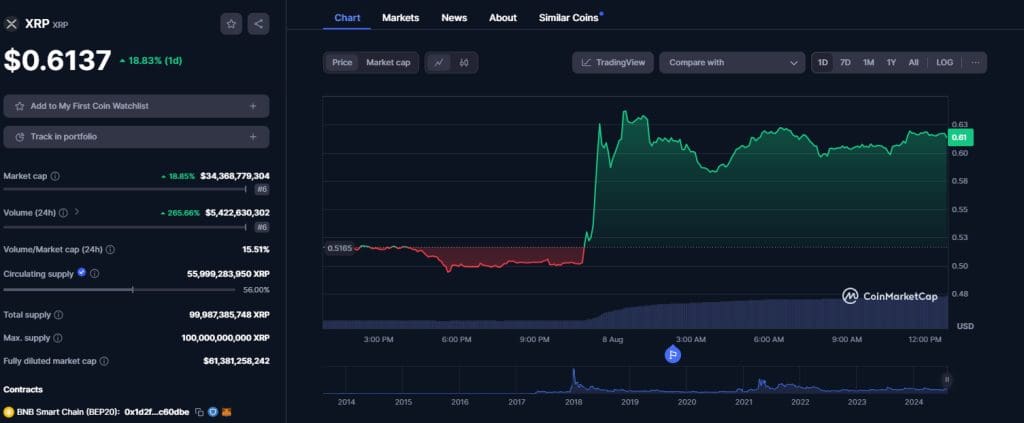What Is a Node: Understanding Its Role and Functionality
A blockchain node is a crucial element of the blockchain network, acting as a participant that helps validate and relay transactions. These nodes store a copy of the blockchain's distributed ledger and ensure that all transactions are legitimate and secure. By maintaining consensus within the network, nodes play a significant role in preventing fraud and ensuring the stability of the entire system.
Each node can be thought of as a gatekeeper, protecting the integrity of the blockchain. They work together to confirm transactions, making sure that every entry on the ledger is accurate. Without nodes, the decentralized nature of blockchain would not function effectively, highlighting their importance in this innovative technology.
Understanding the role of blockchain nodes provides insights into how this system operates and why it remains reliable. As he or she explores this topic, it becomes clear that these nodes are not just technical components; they are fundamental to the future of secure digital transactions.
Understanding Blockchain Basics
Blockchain technology is built on key concepts that enhance its value and function. This section explores the definitions, significance of decentralization, and the essential role that nodes play within a blockchain network.
Defining Blockchain
A blockchain is a digital ledger that records transactions across many computers. Each transaction is grouped into a block. These blocks are linked together in chronological order to form a chain. This structure makes it nearly impossible to alter any information in a block without changing all subsequent blocks. Each node in the network holds a copy of the entire blockchain, ensuring transparency and security.
Importance of Decentralization
Decentralization is a fundamental feature of blockchain technology. Instead of a single authority controlling the data, multiple nodes share responsibility. This distribution increases security and minimizes the risk of data breaches. If one node fails, others can continue to operate, making the network resilient. Users trust that no single entity can manipulate information, as the consensus from multiple nodes is required for any changes to the blockchain.
The Role of Nodes in Blockchain
Nodes are the backbone of a blockchain network. Each node acts as a participant, maintaining a copy of the blockchain and verifying transactions. When a new block is created, nodes work together to validate it before it is added to the blockchain. This process ensures accuracy and prevents fraud.
Nodes also communicate with one another to propagate information across the network. They enable users to interact with the blockchain, whether for transactions or data queries. By decentralizing control, nodes maintain the integrity and security of the entire system, making the blockchain reliable for users.
Types of Blockchain Nodes
Blockchain nodes are crucial components of a decentralized network. Each type of node has specific functions and responsibilities that affect how the blockchain operates. Understanding these types is essential for grasping the overall functionality of blockchain technology.
Full Nodes
Full nodes serve as the backbone of the blockchain. They maintain a complete copy of the blockchain and validate transactions by following network rules. This verification process requires significant storage and bandwidth.
There are two main types of full nodes: pruned and archival.
Pruned Full Nodes: These nodes download the entire blockchain but only keep a limited history and recent transactions. They free up storage while still contributing to network security.
Archival Full Nodes: In contrast, these nodes store the entire blockchain's history without limits. They are crucial for developers who need complete access for analysis or building applications.
Both types ensure the network runs smoothly and securely.
Light Nodes
Light nodes are designed for users with limited resources. Unlike full nodes, they do not store a complete copy of the blockchain. Instead, light nodes download only a portion of the blockchain, typically the block headers.
This means light nodes rely on full nodes for transaction verification.
Efficiency: They require less storage space and bandwidth, making them ideal for mobile devices.
Speed: Light nodes can quickly verify transactions, allowing for faster interactions with the blockchain.
They play a vital role, especially for users who want quick access to the blockchain without the overhead of a full node.
Authority Nodes
Authority nodes add an additional layer of structure to blockchain networks. They play a critical role in block validation and overall governance.
Functionality: These nodes are typically part of a permissioned or private blockchain. They must meet certain criteria to participate in the network, such as identity verification or stakeholding.
Examples: Staking nodes and masternodes are common types of authority nodes. Staking nodes require users to lock up cryptocurrency, providing security and stability to the network. Masternodes often offer additional services, like facilitating instant transactions or enabling privacy features.
Authority nodes help maintain order within the blockchain, ensuring that only trusted participants can validate transactions.
The Function of a Node
A blockchain node plays a crucial role in the network by facilitating communication, validating transactions, and maintaining the integrity of the blockchain. Understanding these functions helps clarify why nodes are essential components in any blockchain system.
Transmission of Information
Nodes serve as communication points within the blockchain network. When a user initiates a transaction, it gets broadcasted to nearby nodes. These nodes then relay the transaction information to other nodes, creating a flow of data throughout the network.
This transmission ensures that all nodes receive the same information regarding pending transactions. Each node maintains a copy of the ledger, which updates as transactions are validated. This constant communication helps prevent discrepancies and keeps all participants informed.
Efficient transmission also involves propagating blocks of transactions once they get added to the chain. This allows for quicker updates and real-time synchronization across the network.
Validation Process
Once a transaction is broadcasted, nodes validate it against the rules of the blockchain. They check whether the transaction details meet all requirements, such as verifying digital signatures and ensuring the sender has sufficient funds. Nodes work collaboratively to verify transactions.
After validation, each node records the transaction in its local copy of the blockchain. This process is critical for maintaining accuracy and preventing fraudulent transactions from being added to the blockchain.
If a transaction is deemed invalid, nodes reject it and prevent it from interfering with the network's integrity. This validation process maintains trust among users by ensuring that only legitimate transactions are processed.
Consensus Mechanism
Consensus is essential to the functioning of any blockchain network. Nodes use various algorithms to reach an agreement on the state of the blockchain. This helps ensure that all valid transactions are included in the ledger.
In proof-of-work systems, for example, nodes compete to solve complex mathematical problems to add blocks. After a node successfully adds a block, it broadcasts the updated ledger. Other nodes confirm this addition, reaching consensus.
In simpler systems, such as proof-of-stake, nodes validate transactions based on the amount of cryptocurrency they hold. Each consensus mechanism aims to secure the network against attacks and ensure that all nodes have a consistent view of the blockchain.
Node Requirements
Setting up a blockchain node requires specific hardware, software, and network conditions. Understanding these requirements helps in choosing the right setup for effective performance.
Hardware Specifications
When selecting hardware for a blockchain node, the specifications can vary based on the type of blockchain. A typical node may need:
CPU: A multi-core processor is recommended to handle multiple tasks efficiently.
RAM: At least 4GB to 8GB of RAM is necessary for smooth performance.
Storage: Depending on the blockchain, storage can range from 100GB to several terabytes. Using SSDs is preferred for faster data access.
Backup: Regular data backups are essential to prevent data loss.
Node operators should also consider the power supply and cooling system since running a node continuously can generate heat.
Software Necessities
The software for a blockchain node is crucial for its functionality and security. The node operator needs to install various components, including:
Blockchain Client: This is the core software, like Bitcoin Core or Ethereum, specific to the chosen blockchain.
Operating System: Choices typically include Linux, Windows, or macOS. Linux is often preferred for its stability and security.
Firewall and Security Software: Protecting the node from external threats is important. A robust firewall is necessary.
Updates: Regularly updating the software ensures the node stays secure and performs optimally.
Understanding the specific software needs is vital for seamless operations.
Network Connectivity
A reliable and stable internet connection is essential for a blockchain node to function effectively. Key aspects include:
Bandwidth: A minimum download and upload speed of at least 1 Mbps is advisable. Higher speeds are better, especially for high-transaction blockchains.
Latency: Low latency improves communication with other nodes. It is ideal to keep latency below 100 ms.
Port Forwarding: Configuring ports on the router enables other nodes to connect easily. This is critical for maintaining network participation.
Uptime: A node should aim for high uptime, often exceeding 95%, to contribute consistently.
Maintaining strong network connectivity is crucial for the node’s role in the blockchain ecosystem.
Blockchain Transactions
Blockchain transactions involve the creation, validation, and storage of data within a blockchain network. These steps ensure that transactions are secure, accurate, and permanently recorded.
Creation and Broadcast
Every transaction begins with a user requesting to send digital assets. This request includes key details such as the sender's public address, the receiver's address, and the amount being transferred. Once a user creates the transaction, it is packaged into a digital ”message.”
This message is then broadcast to the network. Nodes in the network receive it almost instantly. They play a crucial role in this phase, as they ensure that transactions are shared with other nodes for validation.
Transaction Verification
After broadcasting, the transaction must be verified. Nodes check for validity, ensuring that the sender has enough funds and that the transaction format is correct.
Verification follows strict rules defined by the blockchain's protocol. Each node checks the transaction against its copy of the blockchain. If most nodes confirm it is valid, the transaction is accepted. If not, it is rejected.
Storage in Blocks
Once verified, transactions are grouped into a block. This block contains multiple transactions and is linked to the previous block. Each block has a unique identifier called a hash, which ensures its integrity.
After creation, the block is added to the blockchain. The entire network updates its copy of the blockchain to include the new block. This process makes it nearly impossible to alter past transactions, ensuring a permanent record for all assets.
Consensus Protocols
Consensus protocols are essential for maintaining agreement among nodes in a blockchain network. They ensure that all participants recognize the same version of the truth, or the state of the blockchain. This section covers key methods used for achieving consensus.
Proof of Work (PoW)
Proof of Work is a consensus mechanism commonly used in blockchains like Bitcoin. In this system, nodes, known as miners, compete to solve complex mathematical problems. This competition requires significant computational power and energy.
When a miner solves the problem, they add a new block to the blockchain and receive a reward in cryptocurrency. This process helps secure the network by making it hard for any single entity to control it.
Some drawbacks include high energy consumption and slower transaction speeds due to the time required to mine blocks. PoW also has impacts on mining centralization, where only those with powerful hardware can compete effectively.
Proof of Stake (PoS)
Proof of Stake offers a different approach to reaching consensus. Instead of relying on computational power, nodes in PoS are chosen to validate transactions based on the number of coins they hold and are willing to ”stake” or lock up.
This method can result in faster transaction processing and less energy usage. If a node behaves dishonestly, they can lose part of their staked coins, which discourages malicious behavior.
Popular coins using PoS include Ethereum after its transition from PoW. PoS aims to maintain network security while being more environmentally friendly compared to PoW.
Other Consensus Methods
Beyond PoW and PoS, there are several other consensus mechanisms. These include Delegated Proof of Stake (DPoS) and Practical Byzantine Fault Tolerance (PBFT). DPoS involves electing a small number of trusted nodes to validate transactions, increasing efficiency.
PBFT focuses on achieving consensus in networks with known participants, which can enhance speed and security. Various methods have unique benefits and challenges, chosen based on the specific needs of different blockchain applications.
By using diverse consensus strategies, blockchain networks can optimize performance while ensuring reliability and security.
Security and Privacy
Security and privacy are crucial aspects of blockchain nodes. They ensure that transactions are safe and that sensitive information remains protected. Key elements include the immutable nature of the ledger, resistance to alteration, and robust cryptographic methods.
The Immutable Ledger
The blockchain ledger is designed to be immutable, meaning once a transaction is recorded, it cannot be changed or deleted. This characteristic builds trust among users and participants in the network. Every transaction is linked to the previous one, creating a chain of blocks. Changes to past transactions would require altering all subsequent blocks. This is nearly impossible due to the decentralized nature of the blockchain.
Resilience to Alteration
Each node on the network has its own copy of the blockchain. This redundancy makes the system more resilient to attacks. To manipulate the ledger, an attacker would need control of more than 50% of the nodes, known as a 51% attack. Achieving this is highly unlikely in well-established networks because of the vast number of nodes involved. Thus, the decentralized structure helps secure the data against unauthorized changes.
Cryptography in Blockchain
Cryptography plays a vital role in ensuring the security and privacy of blockchain transactions. Each transaction is encrypted using advanced algorithms, making it difficult for anyone to interpret the data without the proper keys. Public and private keys are used to control access to the cryptocurrency. Additionally, hashing techniques secure the data further by converting it into a fixed-size string, ensuring that even minor changes are evident. This strong cryptographic framework protects against fraud and secures user identities.
Mining and Staking Nodes
Mining and staking nodes play crucial roles in securing blockchain networks. They help maintain the network's integrity and ensure transactions are verified properly. Both processes have distinct methods and rewards that motivate participants.
Mining Process
Mining involves using computers to solve complex mathematical problems. Miners compete to add new blocks to the blockchain. This process is called Proof of Work (PoW). Each time a miner successfully adds a block, they receive a block reward, usually in the form of cryptocurrency.
Miners also validate transactions within the block. To do this, they must verify that users have enough coins for their transactions. Full nodes often participate in this process by storing the entire blockchain and ensuring the accuracy of each block added. This collective effort strengthens the security and reliability of the network.
Staking for Consensus
Staking is a different approach to maintaining the blockchain, commonly used in networks that operate on Proof of Stake (PoS). Instead of mining, participants lock up a certain amount of cryptocurrency as collateral to validate transactions.
Stakers are selected to add new blocks based on the amount of cryptocurrency they hold and are willing to stake. This process reduces the energy consumption associated with mining. It also encourages holders to keep their assets in the network, promoting stability.
Rewards and Incentives
In both mining and staking, participants receive rewards for their efforts. Mining rewards often include transaction fees and newly created coins, promoting competition among miners to secure more blocks.
For staking, the rewards usually come from transaction fees and newly minted coins as well. The more coins staked, the higher the chance of being chosen to validate a block. These incentives drive participation and enhance the overall security of the blockchain, benefiting the entire network.
Economic Implications of Nodes
Nodes play a significant role in the economy of blockchain networks. The operation of these nodes incurs costs, while they can also generate revenue through mining and staking activities. Both these aspects can affect the profitability and sustainability of participating in a blockchain network.
Node Operation Costs
Running a blockchain node involves various costs. This includes hardware expenses, such as purchasing a reliable computer or server. Nodes also require sufficient storage to keep the blockchain data, which can grow over time.
Energy consumption is another major cost. Nodes consume electricity for their operations, especially full nodes, which constantly sync with the network.
In many cases, joining a mining pool can help distribute these costs among multiple participants. This makes the operation of nodes more feasible for individual miners who might struggle with the high costs of mining solo.
Revenue from Mining and Staking
Many blockchain networks provide financial incentives for nodes through mining and staking rewards.
Mining nodes receive rewards for validating transactions and adding blocks to the blockchain. This can lead to substantial profits, depending on the network's reward structure and coin value.
Staking nodes earn rewards for participating in proof-of-stake systems. By locking their coins in the network, they help validate transactions and maintain its integrity.
Both methods contribute to a node's revenue stream. However, profitability can fluctuate based on market conditions, energy costs, and the level of competition in the network.
Understanding these economic implications is crucial for individuals and entities considering becoming nodes in blockchain networks.
Frequently Asked Questions
What are the different types of nodes in blockchain technology?
There are several types of blockchain nodes, each with a specific role. The main types include full nodes, light nodes, and mining nodes. Full nodes keep a complete copy of the blockchain and verify transactions. Light nodes store only part of the blockchain, relying on full nodes for information. Mining nodes validate transactions and add them to the blockchain.
How do blockchain nodes validate transactions?
Blockchain nodes validate transactions through a consensus mechanism. This process involves checking the transactions against the existing blockchain data. Nodes ensure that the transaction complies with network rules, such as not spending the same coin twice. If the transaction is valid, nodes propagate it further across the network.
What is the role of a mining node in cryptocurrency networks?
Mining nodes have a crucial function in cryptocurrency networks. They validate and add new transactions to the blockchain. This process often involves solving complex mathematical problems, known as proof-of-work. Successful mining rewards nodes with cryptocurrency, incentivizing them to continue participating in the network.
Can operating a blockchain node be profitable, and how?
Operating a blockchain node can be profitable depending on several factors. For mining nodes, success depends on solving blocks and earning rewards. Full nodes do not directly earn money, but they can support transactions and enhance the network. In some cases, running a node might provide access to specific network incentives or staking rewards.
What are the requirements for running a full blockchain node?
Running a full blockchain node requires certain hardware and software specifications. Typically, a powerful computer with adequate storage, memory, and a reliable internet connection is needed. Users must also download and install the full blockchain software to store the entire blockchain ledger. Specific requirements may vary by cryptocurrency.
How does the location of a blockchain node affect its performance?
The location of a blockchain node can impact its performance and speed. Nodes closer to other network participants may have quicker communication times. A stable and fast internet connection is important for efficient data transmission. Geographic location can also influence latency, which affects transaction confirmation times.




